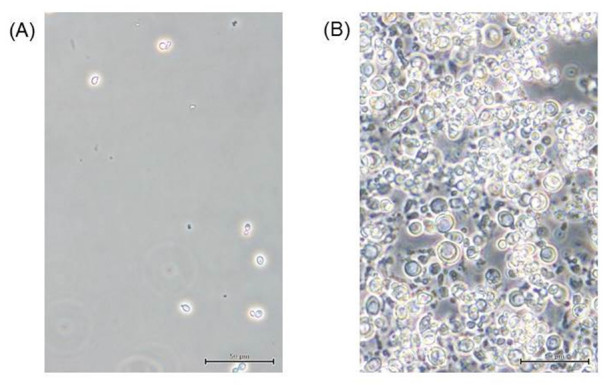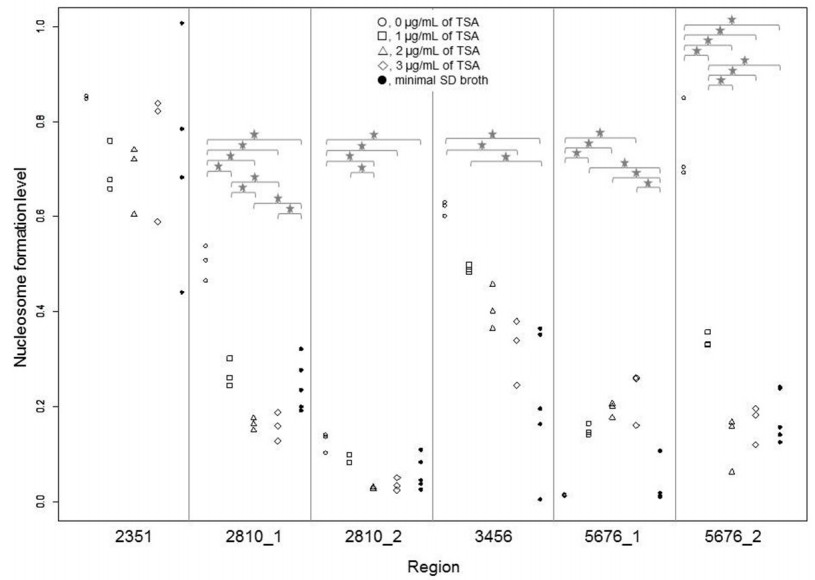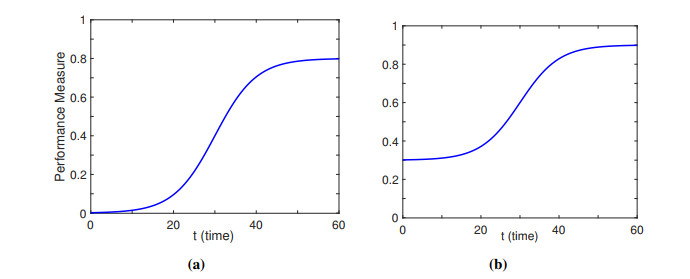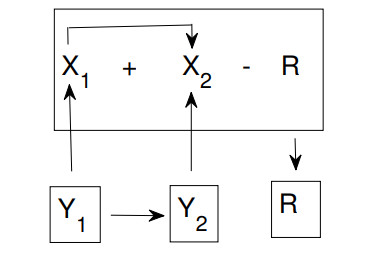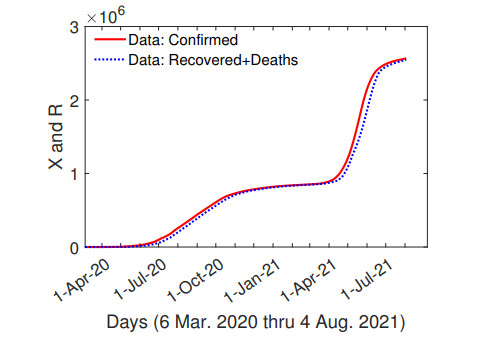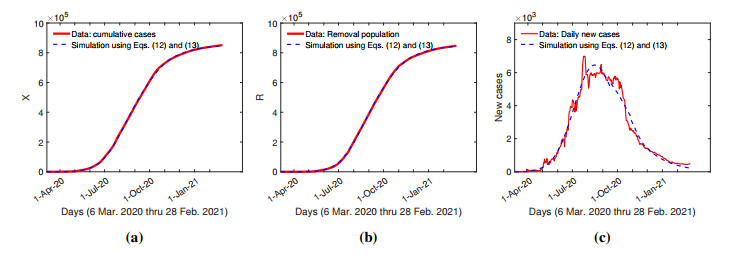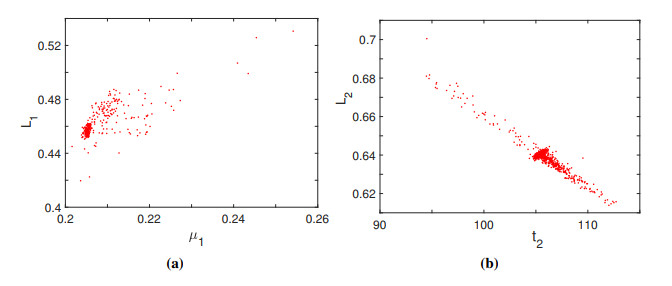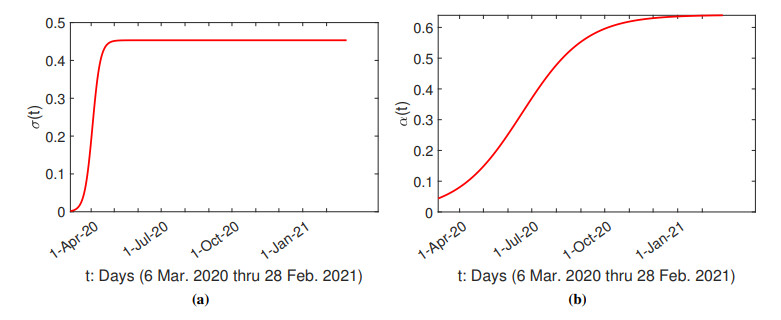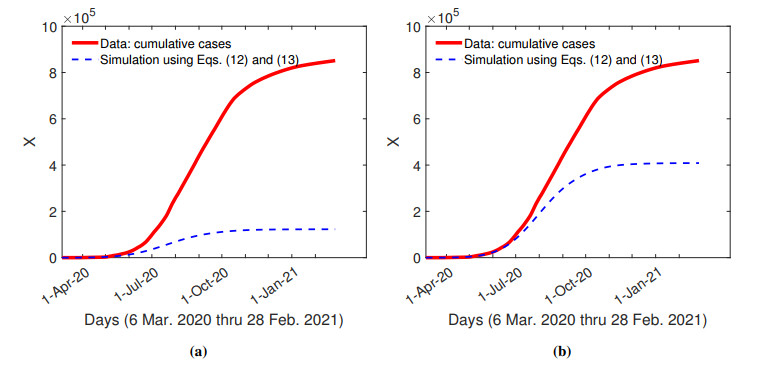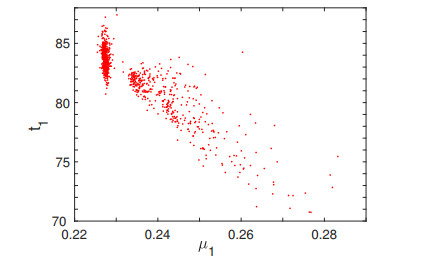|
[1]
|
World Health Organization, Naming the coronavirus disease (COVID-19) and the virus that causes it. Available from: https://www.who.int/emergencies/diseases/novel-coronavirus-2019/technical-guidance/naming-the-coronavirus-disease-(covid-2019)-and-the-virus-that-causes-it.
|
|
[2]
|
Coronaviridae Study Group of the International Committee on Taxonomy of Viruses, The species Severe acute respiratory syndrome-related coronavirus: classifying 2019-nCoV and naming it SARS-CoV-2, Nat. Microbiol., 5 (2020), 536–544. https://doi.org/10.1038/s41564-020-0695-z doi: 10.1038/s41564-020-0695-z

|
|
[3]
|
M. Mohammed, H. Syamsudin, S. Al-Zubaidi, A. Sairah, R. Ramli, E. Yusuf, Novel COVID-19 detection and diagnosis system using IOT based smart helmet, Int. J. Psychosoc. Rehabilitation, 24 (2020), 2296–2303. https://doi.org/10.37200/IJPR/V24I7/PR270221 doi: 10.37200/IJPR/V24I7/PR270221

|
|
[4]
|
World Health Organization, WHO Director-General's opening remarks at the media briefing on COVID-19-11 March 2020. Available from: https://www.who.int/dg/speeches/detail/who-director-general-s-openingremarks-at-the-media-briefing-on-covid-19—11- march-2020.
|
|
[5]
|
C. Huang, Y. Wang, X. Li, L. Ren, J. Zhao, Y. Hu, et al, Clinical features of patients infected with 2019 novel coronavirus in Wuhan, China, The lancet, 395 (2020), 497–506. https://doi.org/10.1016/S0140-6736(20)30183-5 doi: 10.1016/S0140-6736(20)30183-5

|
|
[6]
|
H. Lu, C. W. Stratton, Y. W. Tang, Outbreak of pneumonia of unknown etiology in Wuhan, China: The mystery and the miracle, J. Med. Virol., 92 (2020), 401–402. https://doi.org/10.1002/jmv.25678 doi: 10.1002/jmv.25678

|
|
[7]
|
World Health Organization, management of severe acute respiratory infections when novel coronavirus is suspected: what to do and what not to do, Available from: https://www.who.int/csr/disease/coronavirus_infections/InterimGuidance_ClinicalManagem- ent_NovelCoronavirus.
|
|
[8]
|
S. Kashte, A. Gulbake, S. El-Amin, A. Gupta, COVID-19 vaccines: rapid development, implications, challenges and future prospects, Human. Cell, 34 (2021), 1–23. https://doi.org/10.1007/s13577-021-00512-4 doi: 10.1007/s13577-021-00512-4

|
|
[9]
|
T. Balasubramaniam, D. J. Warne, R. Nayak, K. Mengersen, Explainability of the COVID-19 epidemiological model with nonnegative tensor factorization, Int J Data Sci. Anal., 30 (2022), 1–14. https://doi.org/10.1007/s41060-022-00324-1 doi: 10.1007/s41060-022-00324-1

|
|
[10]
|
R. S. Yadav, Mathematical modeling and simulation of SIR model for COVID-2019 epidemic outbreak: A case study of India, INFOCOMP J. Comput. Sci., 19 (2020), 1–9. https://doi.org/10.1101/2020.05.15.20103077 doi: 10.1101/2020.05.15.20103077

|
|
[11]
|
H. Hassen, A. Elaoud, N. Salah, A. Masmoudi, A SIR-Poisson model for COVID-19: evolution and transmission inference in the Maghreb central regions, Arab. J. Sci. Eng.. 46 (2021), 93–102. https://doi.org/10.1007/s13369-020-04792-0
|
|
[12]
|
R. Bhardwaj, A predictive model for the evolution of COVID-19, Trans. Indian Natl. Acad. Eng., 5 (2020), 133–140. https://doi.org/10.1007/s41403-020-00130-w doi: 10.1007/s41403-020-00130-w

|
|
[13]
|
B. Jamshidi, M. Rezaei, S. J. Zargaran, F. Najafi, Mathematical modeling the epicenters of coronavirus disease-2019 (COVID-19) pandemic, Epidemiol. Methods, 9 (2020), 20200009. https://doi.org/10.1515/em-2020-0009 doi: 10.1515/em-2020-0009

|
|
[14]
|
K. Santosh, COVID-19 prediction models and unexploited data, J. Med. Syst., 44 (2021), 170. https://doi.org/10.1007/s10916-020-01645-z doi: 10.1007/s10916-020-01645-z

|
|
[15]
|
A. L. Jenner, A. A. Rosemary, S. Alfonso, V. Crowe, X. Deng, A. P. Smith, et al., COVID-19 virtual patient cohort suggests immune mechanisms driving disease outcomes, Plos Pathog., 17 (2021), e1009753. https://doi.org/10.1371/journal.ppat.1009753 doi: 10.1371/journal.ppat.1009753

|
|
[16]
|
S. Farhang-Sardroodi, C. S. Korosec, S. Gholami, M. Craig, I. R. Moyles, M. S. Ghaemi, et al., Analysis of hostimmunological response of Adenovirus-based COVID-19 vaccines, Vaccines, 9 (2021), 861. https://doi.org/10.3390/vaccines9080861 doi: 10.3390/vaccines9080861

|
|
[17]
|
A. Goyal, E. F. Cardozo-Ojeda, J. T. Schiffer, Potency and timing of antiviral therapy as determinants of duration of SARS-CoV-2 shedding and intensity of inflammatory response, Sci. Adv., 6 (2020), eabc7112. https://www.science.org/doi/10.1126/sciadv.abc7112
|
|
[18]
|
M. Dawoudi, Mathematical modeling approaches to understanding severe acute respiratory syndrome coronavirus 2 (SARSCoV-2) DNA sequences linked coronavirus disease (COVID-19) for discovery of potential new drugs, OAJBS, 2 (2020), 316–317. https://doi.org/10.38125/OAJBS.000173 doi: 10.38125/OAJBS.000173

|
|
[19]
|
M. Wanjau, Mathematical modeling of COVID-19 transmission with mass testing and contact tracing, J. Math., 16 (2020), 55–64.
|
|
[20]
|
J. Ndam, Modelling the impacts of lockdown and isolation on the eradication of COVI-19, Biomath, 9 (2020), 2009107. http://dx.doi.org/10.11145/j.biomath.2020.09.107 doi: 10.11145/j.biomath.2020.09.107

|
|
[21]
|
R. Asempapa, B. Oduro, O. Apenteng, V. Magagula, A COVID-19 mathematical model of at-risk populations with non-pharmaceutical preventive measures: The case of Brazil and South Africa, Infect. Dis. Model., 7 (2022), 45–61. https://doi.org/10.1016/j.idm.2021.11.005 doi: 10.1016/j.idm.2021.11.005

|
|
[22]
|
J. Rojas-Vallejos, Strengths and limitations of mathematical models in pandemics-the case of COVID-19 in Chile, Medwave, 20 (2020), e7874. https://doi.org/10.5867/medwave.2020.03.7874 doi: 10.5867/medwave.2020.03.7874

|
|
[23]
|
M. Alvarez, González-González E, Santiago G, Modeling COVID-19 epidemics in an Excel spreadsheet to enable first-hand accurate predictions of the pandemic evolution in urban areas, Sci. Rep., 11 (2021), 1–12. https://doi.org/10.1038/s41598-021-83697-w doi: 10.1038/s41598-021-83697-w

|
|
[24]
|
S. Baharom, S. Anuar, N. Zolkifly, H. Tahir, The people's behavior change during pandemic of Covid-19; the four aspects of design thinking, in International Conference of Innovation in Media and Visual Design, 502 (2020), 180–186. https://doi.org/10.2991/assehr.k.201202.073
|
|
[25]
|
W. Wolff, C. Martarelli, J. Schüler, M. Bieleke, High boredom proneness and low trait self-control impair adherence to social distancing guidelines during the COVID-19 pandemic, Int. J. Environ. Res. Public Health, 17 (2020), 5420. https://doi.org/10.3390/ijerph17155420 doi: 10.3390/ijerph17155420

|
|
[26]
|
T. Zhao, K. Xuan, C. Sun, Y. Sun, The importance of social distancing policy, J. Public Health, 43 (2021), e269–e269. https://doi.org/10.1093/pubmed/fdaa219 doi: 10.1093/pubmed/fdaa219

|
|
[27]
|
J. Murre, S-shaped learning curves, Psychon. Bull. Rev., 21 (2014), 344–356. https://doi.org/10.3758/s13423-013-0522-0
|
|
[28]
|
T. Netland, K. Ferdows, The S-curve effect of lean implementation, Prod. Oper. Manag., 25 (2016), 1106–1120. https://doi.org/10.1111/poms.12539 doi: 10.1111/poms.12539

|
|
[29]
|
S. Kaushal, A. Rajput, S. Bhattacharya, M. Vidyasagar, A. Kumar, M. Prakash, et al., Estimating the herd immunity threshold by accounting for the hidden asymptomatics using a COVID-19 specific model. Plos One, 15 (2020), e0242132. https://doi.org/10.1371/journal.pone.0242132
|
|
[30]
|
S. SeyedAlinaghi, L. Abbasian, M. Solduzian, N. A. Yazdi, F. Jafari, A. Adibimehr, et al., Predictors of the prolonged recovery period in COVID-19 patients: a cross-sectional study, Eur. J. Med. Res., 26 (2021). https://doi.org/10.1186/s40001-021-00513-x
|
|
[31]
|
J. Lei, M. Li, X. Wang, Predicting the development trend of the second wave of COVID-19 in five European countries, J. Med. Virol., 93 (2021), 5896–5907. https://doi.org/10.1002/jmv.27143 doi: 10.1002/jmv.27143

|
|
[32]
|
M. Linden, J. Dehning, S. Mohr, J. Mohring, M. Meyer-Hermann, I. Pigeot, Case numbers beyond contact tracing capacity are endangering the containment of COVID-19, Dtsch. Arztebl. Int., 117 (2020), 790–791. https://doi.org/10.3238/arztebl.2020.0790 doi: 10.3238/arztebl.2020.0790

|
|
[33]
|
E. Argulian, Anticipating the "second wave" of health care strain in the covid-19 pandemic, J. Am. Coll. Cardiol. Case Rep., 2 (2020), 845–846. https://doi.org/10.1016/j.jaccas.2020.04.005 doi: 10.1016/j.jaccas.2020.04.005

|
|
[34]
|
S. Vaid, A. McAdie, R. Kremer, V. Khanduja, M. Bhandari, Risk of a second wave of Covid-19 infections: using artificial intelligence to investigate stringency of physical distancing policies in North America, Int. Orthop., 44 (2020), 1581–1589. https://doi.org/10.1007/s00264-020-04653-3 doi: 10.1007/s00264-020-04653-3

|
|
[35]
|
K. R. Nehal, L. M. Steendam, M. C. Ponce, M. van der Hoeven, G. S. A. Smit, Worldwide vaccination willingness for COVID-19: a systematic review and meta-analysis, Vaccines, 9 (2021), 1071. https://doi.org/10.3390/vaccines9101071 doi: 10.3390/vaccines9101071

|
|
[36]
|
C. Lin, P. Tu, L. Beitsch, Confidence and receptivity for COVID-19 vaccines: a rapid systematic review, Vaccines, 9 (2021), 16. https://doi.org/10.3390/vaccines9010016 doi: 10.3390/vaccines9010016

|
|
[37]
|
Q. Wang, L. Yang, H. Jin, L. Lin, Vaccination against COVID-19: A systematic review and meta-analysis of acceptability and its predictors, Prev. Med., (2021), 2021106694. https://doi.org/10.1016/j.ypmed.2021.106694
|
|
[38]
|
JHU CSSE COVID-19 daily reports, accessed on 8 November 2021. Available from: https://github.com/CSSEGISandData/COVID-19/tree/master/csse_covid_19_data/csse_covid_19_ daily_reports
|
|
[39]
|
Daily vaccination reports maintained by our world in data, accessed on 14 December 2021. Available from: https://raw.githubusercontent.com/owid/covid-19-data/master/public/data/vaccinations/vaccinations.csv
|
|
[40]
|
K. Parvathy, Lifestyle as risk factor for breast cancer: a case control study in Chennai, Tamil Nadu, Inida, Int. J. Biol. Sci., 12 (2021), 13–32. https://doi.org/10.53390/ijbs.v12.i1.3 doi: 10.53390/ijbs.v12.i1.3

|
|
[41]
|
J. Nelder, R. Mead, A simplex method for function minimization, Comput. J., 7 (1965), 308–313. https://doi.org/10.1093/COMJNL/7.4.308 doi: 10.1093/COMJNL/7.4.308

|
|
[42]
|
T. Luzyanina, S. Mrusek, J. T. Edwards, D. Roose, S. Ehl, G. Bocharov, et al., Computational analysis of CFSE proliferation assay, J. Math. Biol., 54 (2007), 57–89. https://doi.org/10.1007/s00285-006-0046-6 doi: 10.1007/s00285-006-0046-6

|
|
[43]
|
C. Chakraborty, A. Sharma, M. Bhattacharya, G. Agoramoorthy, S. Lee, The current second wave and COVID-19 vaccination status in India, Brain Behav. Immun., 96 (2021), 1–4. https://doi.org/10.1016/j.bbi.2021.05.018 doi: 10.1016/j.bbi.2021.05.018

|
|
[44]
|
C. Cai, Y. Peng, E. Shen, Q. Huang, Y. Chen, P. Liu, et al., A comprehensive analysis of the efficacy and safety of COVID-19 vaccines, Mol. Ther., 29 (2021), 2794–2805. https://doi.org/10.1016/j.ymthe.2021.08.001 doi: 10.1016/j.ymthe.2021.08.001

|
|
[45]
|
F. Polack, S. Thomas, N. Kitchin, J. Absalon, A. Gurtman, S. Lockhart, J. Perez, Safety and efficacy of the BNT162b2 mRNA Covid-19 vaccine, N. Engl. J. Med., 383 (2020), 2603–2615. https://doi.org/10.1056/NEJMoa2034577 doi: 10.1056/NEJMoa2034577

|
|
[46]
|
V. Jain, K. Iyengar, R. Vaishya, Differences between First wave and Second wave of COVID-19 in India, Diabetes Metab. Syndr., 15 (2021), 1047–1048. https://doi.org/10.1016/j.dsx.2021.05.009 doi: 10.1016/j.dsx.2021.05.009

|









 DownLoad:
DownLoad: 